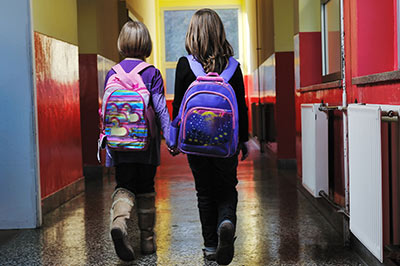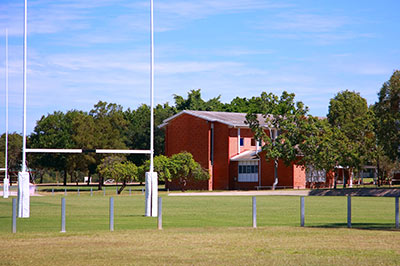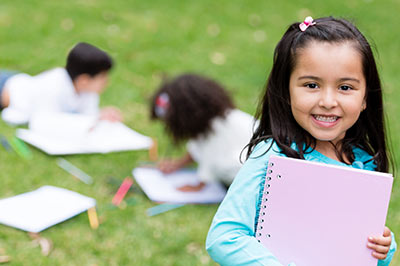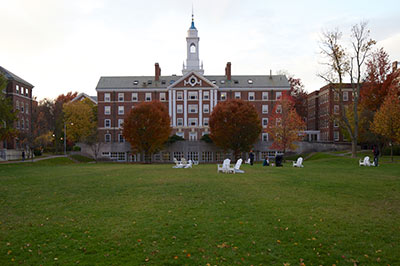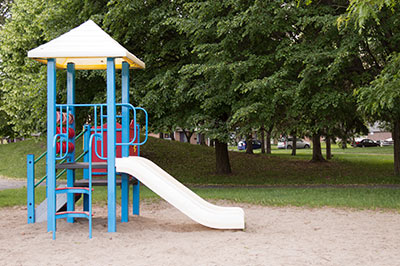By: Mark Cullen (Jun 26 2015). While interviewing a young child on his obsession with being indoors, Richard Louv leaned in towards the young lad and asked, “What is it about being indoors that you find so appealing?” “Why, that’s where the electrical outlets are,” he said. That day, back in 2004, the author decided to write a book exploring the importance of nature in the lives of young people: Last Child in the Woods. Although, it has been 10 years since Louv first published his landmark book, kids continue to suffer from “nature deficit disorder” and sequester themselves indoors. We are at risk of developing permanently hunched backs from looking down at our electronic hand held devices.
Tag: Outdoor Learning
Teaching a Kindergarten Class in the Great Outdoors
How many children get to say that they spent the morning not only in the great outdoors, but doing their part to help wildlife as well? One perfectly sunny, but breezy day in May, my kindergarten class at P.S. 197 in Brooklyn, NY brought the native plants that we had been growing in our classroom to Jamaica Bay Wildlife Refuge, part of the National Park Service’s Gateway National Recreation Area, to provide nourishment for monarch butterflies, bees, and other pollinators.
We had grown the plants from seed that we collected at the Refuge back in October. It was the latest chapter of our year-long Growing a Wild Brooklyn and Queens program, which includes 12 other participating NWF Eco-Schools. In addition to getting the children – and their parents – outside for a second trip to the Refuge, the program gave me the impetus to get the children outside a couple of more times to plant wildflowers in our own pollinator garden at our school.
Early child development: Body of knowledge
Nature 523,286–289
As government education experts call for toddler literacy, and baby apps proliferate, are we losing sight of materials-based learning? Infant scientists and young explorers thrive in the open air and through free play, eager to grasp the world — literally.
Carbon-copy playgrounds. Cramped classrooms. 'Car park' school grounds. Across the industrialized world, these are the environments in which most young children are expected to play and learn; zoo enclosures can look more enriched. Studies are emerging that reveal poor design as a hindrance to learning in the very young, as damaging as militaristic drills. Meanwhile, frogspawn and starry skies — once the recruiting agents of science — are beyond many children's experience. Here, two leading practitioners in developing learning environments for the young set out what needs to happen.
The characteristics of the outdoor school environment associated with physical activity
Haug, Torsheim, Sallis, and Samdal, 2010
The school is an important setting for physical activity. The purpose of the present study was to examine the association between physical envi- ronmental characteristics and participation in daily physical activity during school breaks. Data from 130 schools and 16 471 students (Grades 4–10) in Norway were obtained in 2004 through self-administered questionnaires to principals and students. Multilevel logistic re- gression models revealed that boys at secondary level with a larger number of outdoor facilities at school had 2.69 times [95% confidence inter- val (CI) = 1.21–5.98] and girls 2.90 times (95% CI = 1.32–6.37) higher odds of being physically active compared with students in schools with fewer facilities. Boys at secondary level with areas for hopscotch/skipping rope had 2.53 times (95% CI = 1.55–4.13), with a soccer field 1.68 times (95% CI = 1.15–2.45), with play- ground equipment 1.66 times (95% CI = 1.16– 2.37) and with a sledding hill 1.70 times (95% CI = 1.23–2.35) higher odds to be physically ac- tive compared with students in schools without these facilities. A sledding hill was also associated with girls’ physical activity participation in secondary school (odds ratio = 1.58, 95% CI = 1.11–2.24). Outdoor facilities in secondary schools are associated with students’ daily phys- ical activity participation during school breaks. Therefore, improving the outdoor environment should be considered in physical activity promotion school programs in secondary schools.
Diverse Outdoor Learning, Work Programs Open to Charter Schools
National Charter School Resource Center, 2013
A wide range of outdoor work and learning opportunities are available to charter school students, among others. The programs are offered through a variety of federal agencies and partnerships with nonprofit organizations. Although many of the programs have existed for years, connecting students with education involving parks and wilderness areas has new emphasis. For example, in 2012, the U.S. Department of Education and the U.S. Department of the Interior announced an agreement to expand outdoor education and access for students attending high-need schools. Over the years, programs have included those directly run by federal agencies, as well as those supported by grants or cooperative agreements with nonprofit organizations that can also include private funding. This feature of the National Charter School Resource Center monthly newsletter provides examples of programs, including a charter school that was started to serve Youth Conservation Corps (YCC) participants, and resources to help charter schools connect with opportunities. Some of the diverse youth development and land conservation programs that exist across the country operate throughout the year, and others focus on summer. Programs include development of skills such as using a chainsaw, heavy equipment operation, environmental planning, and other training related to land conservation and restoration. Compensation, in addition to the experience, can include hourly wages, stipends, scholarships, and credits that count toward graduation.
UND University Children’s Learning Center Breaks Ground on Outdoor Classroom/Playgrounds (2015)
The University of North Dakota’s University Children’s Learning Center (UCLC) officially broke ground and began construction on its new outdoor learning play space at an event on June 17, 2015, at the UCLC on the UND campus.
Natural Environment Elevates the Learning Experience
DLR Group
School facilities are evolving from traditional indoor learning spaces to multiple-dimensional spaces that use the entire campus as a learning environment. During our school planning work sessions and design charrettes with students, the message they consistently convey to our designers is the desire to freely move outdoors during the day. It is clear that access to outdoor spaces enhances the overall educational and social experience. Studies by the American Institutes for Research and the Council for Educational Facility Planners International indicate students’ overall health and test scores can benefit from outdoor activity.
Developing Great Schoolyards: A Handbook for Elementary Schools
21st Century School Fund, 2011
Quality schoolyards are important places for elementary schools because outdoor activities are critical for growth, health, education and enjoyment. All children should experience pleasant and well equipped outdoor environments on a daily basis.
Effects of play equipment and loose parts on preschool children’s outdoor play behavior – An observational study and design intervention.
Maxwell, L. E., Mitchell, M. R., & Evans, G. W. (2008). 18 (2)
This research project investigated, in two stages, the ways in which playground equipment and the addition of loose parts to a playground contribute to preschool children’s dramatic and constructive play behaviors. The second study confirmed findings from the first study that young children like to act out dramatic play themes in small, enclosed spaces. In the second study, children were able to construct their own spaces, which not only encouraged dramatic play but also communication and negotiation skills.



